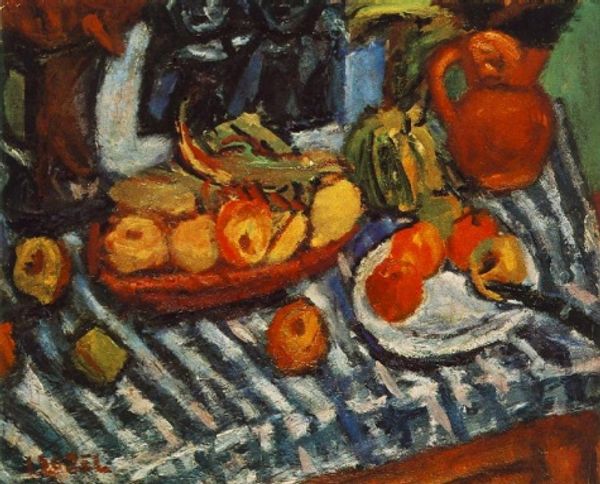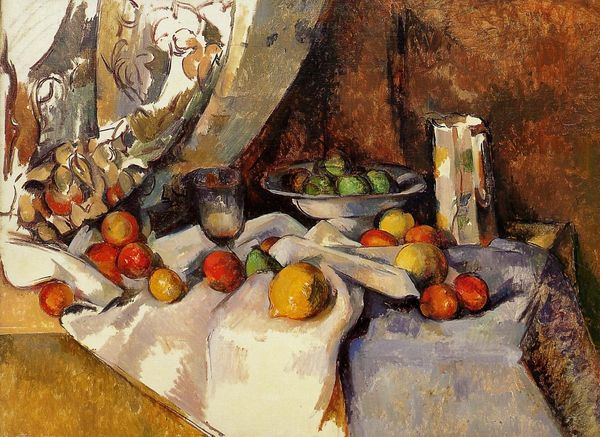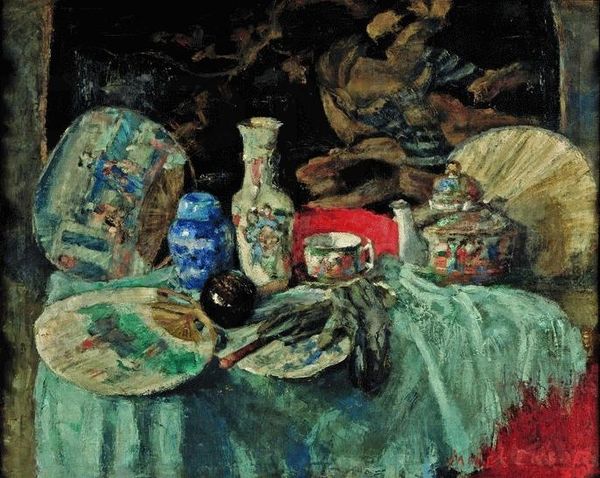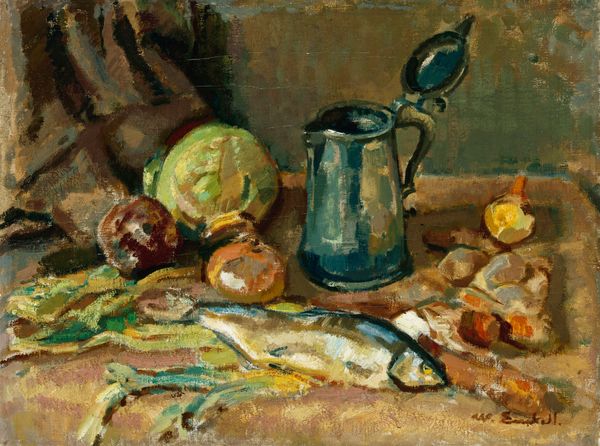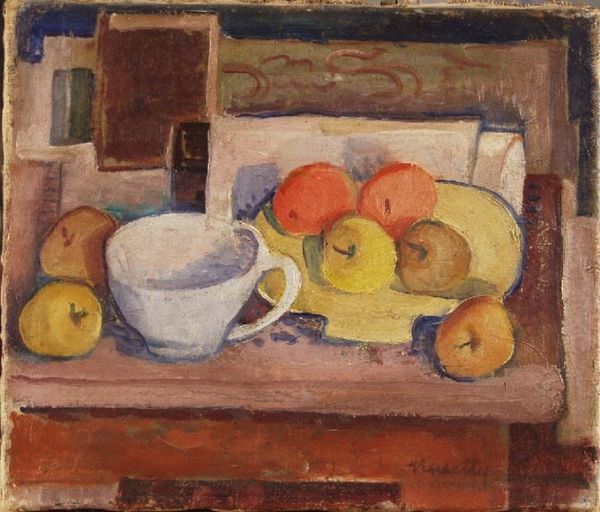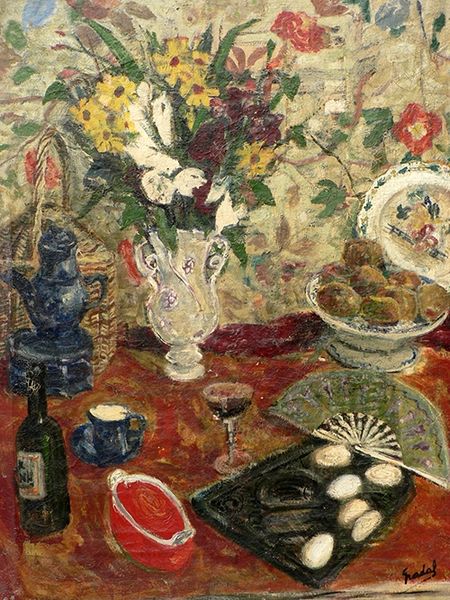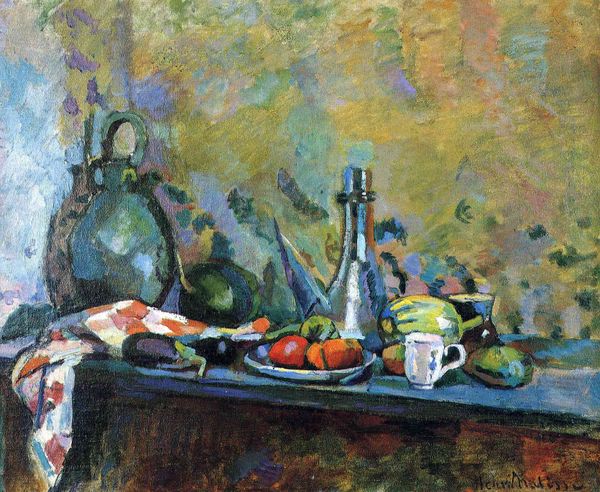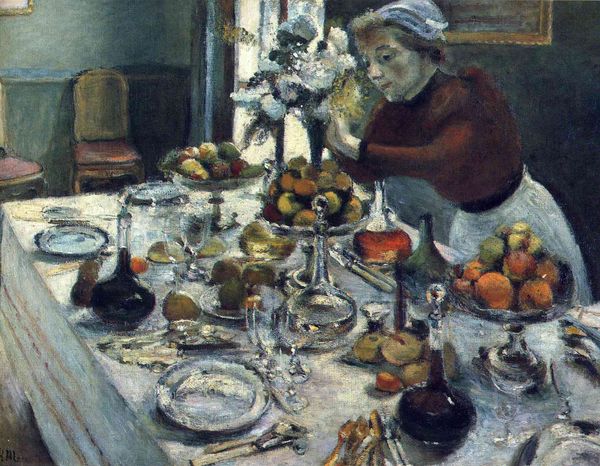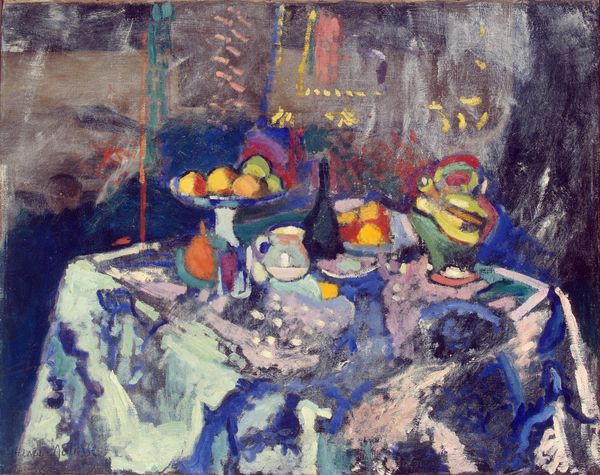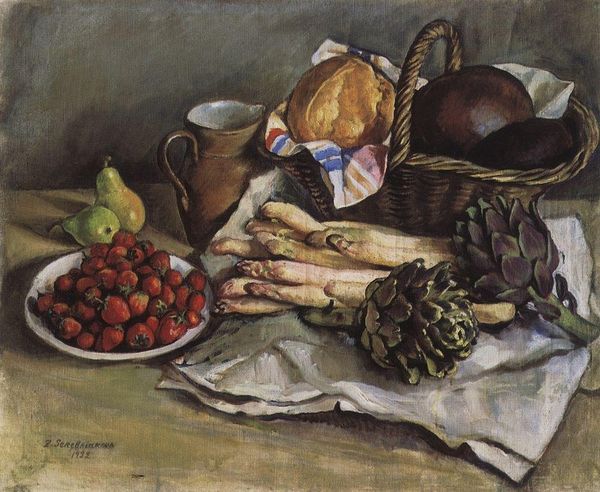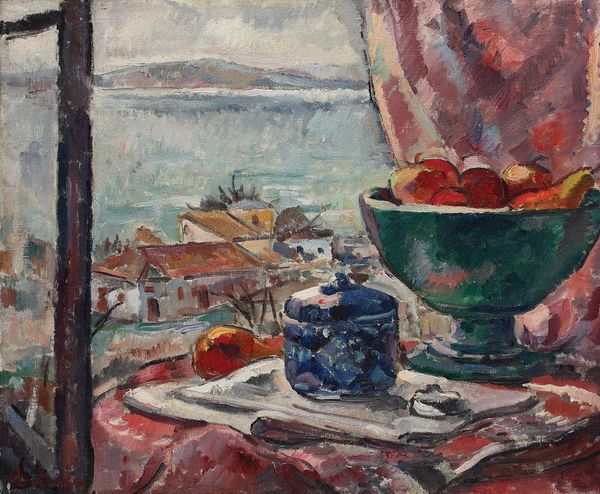
Copyright: Public domain
Curator: What hits me first about Korovin's "Fish" from 1916 is this almost feverish energy—a market still-life bursting with impressionistic brushstrokes. It feels like a celebration of immediacy, doesn't it? Like he just threw it all down in a rush of excitement! Editor: Indeed, there is something decidedly lively in the depiction. What strikes me, though, is how the painting disrupts the traditional still-life narrative. Instead of an emphasis on formal arrangement and symbolism, we see an articulation of pre-revolutionary Russia's socio-economic climate. Curator: Revolution in the air! Makes sense… I can definitely feel that unrestrained urgency there in his brushwork and color choices, so the painting's really mirroring this turbulent political moment, you think? Editor: Absolutely. We have to consider the sociopolitical context in which "Fish" was produced, because we start to notice that Korovin does not center the work on consumerism and class privilege, but on working class livelihood. It depicts food as a resource, perhaps even as a statement of basic human rights, considering there was famine under Tsarist rule. Curator: So, maybe those luscious tomatoes aren't just, you know, *red*? But representative of… nourishment itself? Gosh, I was too busy admiring his technique with oil paints—the way he captures light on the fish scales. Editor: I want to also acknowledge the implications of portraying something considered unglamorous. Consider the genre conventions during this period of art history: fruits, porcelain, wine glasses—not fish, root vegetables, or earthenware mugs. Curator: Yes! The fish is so… prosaic, common. And hung so carelessly from that wire. He's actively resisting that refined approach! It all feels rather brave and revolutionary in its own little way. Like, *this* is life, folks, not just fancy vases! I was looking at it all wrong I think. Editor: We can also analyze the racial undertones that the work engages with when conceptualizing consumption and availability. What are Korovin's views? Does he attempt to highlight or critique capitalist approaches in revolutionary Russia? These questions all warrant analysis as a testament to how art reflects complex themes and beliefs. Curator: I love that your reading offers so much more than surface appearance—a testament to the fish market’s vibrant undercurrents in 1916. Editor: And your perspectives teach us how to be present to art and the world at large!
Comments
No comments
Be the first to comment and join the conversation on the ultimate creative platform.
